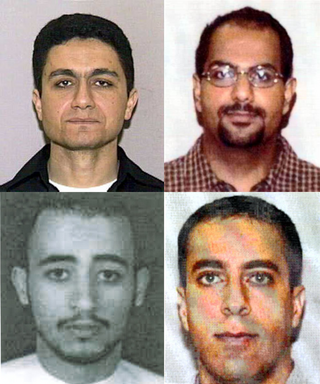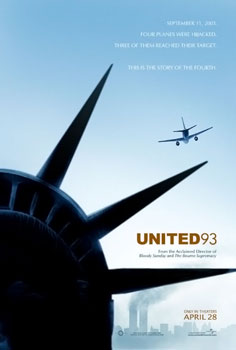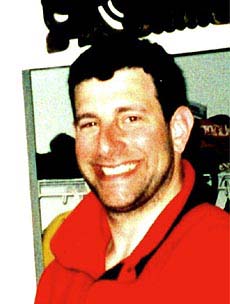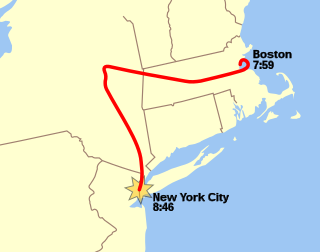
American Airlines Flight 77 was a scheduled domestic transcontinental passenger flight from Dulles International Airport in Northern Virginia to Los Angeles International Airport in Los Angeles. The Boeing 757-200 aircraft serving the flight was hijacked by five al-Qaeda terrorists on the morning of September 11, 2001, as part of the September 11 attacks. The hijacked airliner was deliberately crashed into the Pentagon in Arlington County, Virginia, killing all 64 aboard and another 125 in the building.

Aircraft hijacking is the unlawful seizure of an aircraft by an individual or a group. Dating from the earliest of hijackings, most cases involve the pilot being forced to fly according to the hijacker's demands. There have also been incidents where the hijackers have overpowered the flight crew, made unauthorized entry into the cockpit and flown them into buildings – most notably in the September 11 attacks – and in some cases, planes have been hijacked by the official pilot or co-pilot, such as with Ethiopian Airlines Flight 702.

Ahmed Ibrahim al-Haznawi al-Ghamdi was a Saudi terrorist hijacker. He was one of the four hijackers of United Airlines Flight 93, which was crashed into a field in Stonycreek Township, Pennsylvania, following a passenger revolt, as part of the September 11 attacks.

Mark Kendall Bingham was an American public relations executive who founded his own company, the Bingham Group. During the September 11 attacks in 2001, he was a passenger on board United Airlines Flight 93. Bingham was among the passengers who, along with Todd Beamer, Tom Burnett and Jeremy Glick, formed the plan to retake the plane from the hijackers, and led the effort that resulted in the crash of the plane into a field near Shanksville, Pennsylvania, thwarting the hijackers' plan to crash the plane into a building in Washington, D.C., most likely either the U.S. Capitol Building or the White House.

The aircraft hijackers in the September 11 attacks were 19 men affiliated with jihadist organization al-Qaeda. They hailed from four countries; 15 of them were citizens of Saudi Arabia, two were from the United Arab Emirates, one was from Egypt, and one from Lebanon. To carry out the attacks, the hijackers were organized into four teams each led by a pilot-trained hijacker who would commandeer the flight with three or four "muscle hijackers" who were trained to help subdue the pilots, passengers, and crew. Each team was assigned to a different flight and given a unique target to crash their respective planes into. Mohamed Atta was the assigned ringleader over all 4 groups.

Thomas Edward Burnett Jr. was an American who was the vice-president and chief operating officer of Thoratec Corporation, a medical devices company based in Pleasanton, California; he resided in nearby San Ramon, California. On September 11, 2001, Burnett was a passenger on board United Airlines Flight 93, which was hijacked as part of the September 11 attacks. He, along with other passengers, formed the plan to retake the plane from the hijackers, and led the effort that resulted in the crash of the plane into a field in Stonycreek Township near Shanksville, Pennsylvania, thwarting the plan of the hijackers to crash the plane into a building in Washington, D.C., most likely either the U.S. Capitol Building or the White House.

United Airlines Flight 93 was a domestic scheduled passenger flight that was hijacked by four al-Qaeda terrorists on the morning of September 11, 2001, as part of the September 11 attacks. The hijackers planned to crash the plane into a federal government building in the national capital of Washington, D.C. The mission became a partial failure when the passengers fought back, forcing the terrorists to crash the plane in Somerset County, Pennsylvania, preventing them from reaching al-Qaeda's intended target, but killing everyone aboard the flight. The airliner involved, a Boeing 757-200 with 44 passengers and crew, was flying United Airlines' daily scheduled morning flight from Newark International Airport in New Jersey to San Francisco International Airport in California, making it the only plane hijacked that day not to be a Los Angeles–bound flight.

Ziad Samir al-Jarrah was a Lebanese terrorist hijacker. He was one of the four hijackers of United Airlines Flight 93, which was crashed into a field in a rural area near Shanksville, Pennsylvania, following a passenger revolt, as part of the 11 September attacks.

The September 11 attacks of 2001, in addition to being a unique act of terrorism, constituted a media event on a scale not seen since the advent of civilian global satellite links. Instant worldwide reaction and debate were made possible by round-the-clock television news organizations and by the internet. As a result, most of the events listed below were known by a large portion of the world's population as they occurred.

In September 1970, members of the Popular Front for the Liberation of Palestine (PFLP) hijacked four airliners bound for New York City and one for London. Three aircraft were forced to land at Dawson's Field, a remote desert airstrip near Zarqa, Jordan, formerly Royal Air Force Station Zarqa, which then became PFLP's "Revolutionary Airport". By the end of the incident, one hijacker had been killed and one injury reported. This was the second instance of mass aircraft hijacking, after an escape from communist Czechoslovakia in 1950.

The Hamburg cell was, according to U.S. and German intelligence agencies, a group of radical Islamists based in Hamburg, Germany, that included students from different Arab countries who eventually came to be key operatives in the 9/11 attacks. Important members included Mohamed Atta, who led the four hijacking teams in 2001 and piloted American Airlines Flight 11; Ramzi bin al-Shibh, who conspired with the other three members but was unable to enter the United States; Marwan al-Shehhi, who piloted United Airlines Flight 175; and Ziad Jarrah, who piloted United Airlines Flight 93 and failed to hit a target in Washington, D.C.. Other members included Said Bahaji, Zakariya Essabar, Mounir el-Motassadeq, and Abdelghani Mzoudi.

The Flight 93 National Memorial is a memorial built to commemorate the crash of United Airlines Flight 93, which was one of four aircraft hijacked during the September 11 attacks in 2001. The memorial is located in Somerset County, Pennsylvania, with the vast majority in Stonycreek Township, and with a small portion in Shade Township. It is 78 miles (126 km) southeast of Pittsburgh, 122 miles (196 km) west of Harrisburg, and 226 miles (364 km) west of Philadelphia.

Loose Change is a series of films released between 2005 and 2009 that argue in favor of certain conspiracy theories relating to the September 11 attacks. The films were written and directed by Dylan Avery and produced by Korey Rowe, Jason Bermas, and Matthew Brown.

United 93 is a 2006 docudrama thriller film written and directed by Paul Greengrass. The film largely chronicles the events aboard United Airlines Flight 93, one of the four hijacked flights during the September 11 attacks and the only one not to hit its intended target due to the intervention of passengers and crew; it also covers the experiences of government officials and air traffic controllers watching the other events of the attacks unfold.

The Flight That Fought Back is a docudrama film produced by the London-based company Brook Lapping Productions for the Discovery Channel, about United Airlines Flight 93. The program debuted in the United States on September 11, 2005, marking the fourth anniversary of the event on which it is based.

Lauren Grandcolas was one of the passengers on board United Airlines Flight 93 on September 11, 2001, who made calls providing information about the hijacking of the flight as part of the September 11 attacks. She made a call to her husband on an airphone and left a message telling him of a "problem with the plane".

Todd Morgan Beamer was an American passenger aboard United Airlines Flight 93, which was hijacked and crashed as part of the September 11 attacks in 2001. He was one of the passengers who attempted to regain control of the aircraft from the hijackers. During the struggle, the Boeing 757 lost control and crashed into a field in Stonycreek Township near Shanksville, Pennsylvania, killing everyone on board, but saving the hijackers' intended target and additional victims.

Jeremy Logan Glick was an American passenger on board United Airlines Flight 93, which was hijacked and crashed as part of the September 11 attacks. Aware of the earlier attacks at the World Trade Center, Glick and some of his fellow passengers attempted to foil the hijacking. During a struggle to reclaim the aircraft, it crashed into a field in Stonycreek Township near Shanksville, Pennsylvania, killing all 33 passengers and seven crew members on board, along with the four hijackers.

American Airlines Flight 11 was a domestic passenger flight that was hijacked by five al-Qaeda terrorists on the morning of September 11, 2001, as part of the September 11 attacks. The hijacked airliner was deliberately crashed into the North Tower of the World Trade Center complex in New York City, killing everyone still alive aboard the flight and resulting in the deaths of more than one thousand people in the top 18 stories of the skyscraper in addition to causing the demise of numerous others below the trapped floors, making it not only the deadliest of the four suicide attacks executed that morning in terms of both plane and ground fatalities, but also the single deadliest act of terrorism in human history and the deadliest plane crash of all time. The aircraft involved, a Boeing 767-200(ER) with 92 passengers and crew, was flying American Airlines' daily scheduled morning transcontinental service from Boston Logan International Airport in Massachusetts to Los Angeles International Airport in California.

The Hamburg Cell is a 2004 British-Canadian television docudrama film produced by Channel 4 and Canadian Broadcasting Corporation, and directed by Antonia Bird. It describes the creation of the Hamburg cell, an Islamist extremist group that included the terrorists who piloted the airplanes hijacked during the September 11 attacks. Although the terrorist cell was led by Mohamed Atta, the film is focused on the character of Ziad Jarrah, the one hijacker who had doubts about the attacks, and for various reasons was seen as distinct.



















